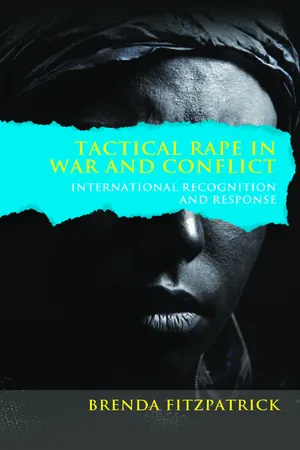![]()
FOUR
Critical commentary
Feminist commentators, NGOs and political advocates condemn the use of rape and sexual violence. Critical analysis includes reservations regarding theorising on rape in conflict, recognises legitimate concerns about the limitations and inappropriateness of judicial systems and gendered international law. It recognises the suffering of women in adversarial court proceedings, and notes the omission of mention and lack of understanding of tactical rape. Despite these legitimate concerns, I am convinced that imperfect and incremental normative change is significant.
Critical analysis
Hilary Charlesworth and Christine Chinkin examined the boundaries of international law from a feminist perspective. They believe that international law excludes appreciation of women’s concerns. Gendered attitudes inherent in law, supposedly applying to both men and women, really ignore or fail to recognise the differing needs of the two genders. International law is ‘a mechanism for distributing power and resources in the international and national communities.’ Quoting Elizabeth Grosz, Charlesworth and Chinkin argued the ‘international’ in international law is a ‘veiled representation and projection of a masculine which takes itself as the unquestioned norm’. While I argue that international law is a logical starting point in achieving recognition and response to tactical rape, it does have serious limitations when applied to women. Charlesworth and Chinkin have informed this understanding by providing sound feminist analysis of international law.
They are convinced that feminist analysis has two major roles: ‘one is deconstruction of the explicit and implicit values of the international legal system, challenging their claim to objectivity and rationality because of the limited base on which they are built’. This conviction could lead to elemental revision of all international law. The second role is reconstructing explicit and implicit values, which ‘requires rebuilding the basic concepts of international law in a way that they do not support or reinforce the domination of women by men’. Gendered formulation and application of international law impedes justice for women, but there has been at least some progress in applying international law more inclusively.
Geneva Convention IV says that state parties must protect women ‘against any attack on their honour, in particular against rape, enforced prostitution or any form of indecent assault’. Not explicitly prohibiting offences but calling for the protection of women and designating rape as a crime against ‘honour’ rather than of violence, it presents women as the property and responsibility of males and family. Protocol I portrays women needing special respect and protection, and Protocol II identifies rape in non-international conflicts as an outrage on personal dignity, and not a violent attack on personal integrity. Chapter Three has highlighted that deeming women always in need of protection exacerbates women and their communities’ vulnerability to tactical rape. Charlesworth and Chinkin’s analysis highlighted that ‘grave breaches of the Geneva Conventions are made subject to universal jurisdiction exercisable in national courts’ and are ‘regarded as the most significant violations of international humanitarian law’. They point out that, ‘rape, enforced prostitution and sexual assault are not explicitly designated grave breaches.’ It is possible to use the wording of Protocol I, which lists grave breaches as ‘degrading practices involving outrages on personal dignity based on racial discrimination’, for prosecuting cases of tactical rape and sexual violence in war. Non-grave breaches can be deemed war crimes. But this is a less than satisfactory formulation in international law. Even in Common Article 3 to the Geneva Conventions, it is not explicit that sexual assault and violence are covered by listed prohibitions.
Charlesworth and Chinkin also noted that human rights law ‘challenges the traditional state-centred scope of international law, giving individuals and groups, otherwise with very restricted access to the international legal system, the possibility of making international legal claims’. This reading of human rights law provides greater opportunity for women to negotiate and use international legal systems. The Universal Declaration of Human Rights requires that states do not engage in acts such as torture, arbitrary deprivation of life, liberty and security – recognising that states could be perpetrators.
However, as Charlesworth and Chinkin pointed out, ‘mainstream human rights institutions have tended to ignore the application of human rights norms to women.’ They referred to the 1993 work of the UNHCR Special Rapporteur on Torture, finding that ‘he rarely considered the application of norms of international human rights law or international humanitarian law (IHL) to women.’ In the Special Rapporteur’s work, ‘well documented cases of torture and ill-treatment of women went un-investigated or were treated in a desultory fashion’. The Special Rapporteur’s condemnation of rapes in Bosnia-Herzegovina focused on the harm resulting to ethnic communities, and failed to acknowledge the harm inflicted on women as individuals because of their sex and gender.
Similarly, the UN’s fact-finding missions in Rwanda did not detect ‘systematic sexual violence against women until nine months after the genocide when women began to give birth in unprecedented numbers’, exemplifying the reality that ‘methods of investigating and documenting human rights abuses can often obscure or even conceal abuses against women’. The failure to report formally on the evidence of widespread tactical rape and sexual violence was incomprehensible to NGO workers such as myself. While human rights law could be invoked, it was as difficult an exercise as applying international hum...
